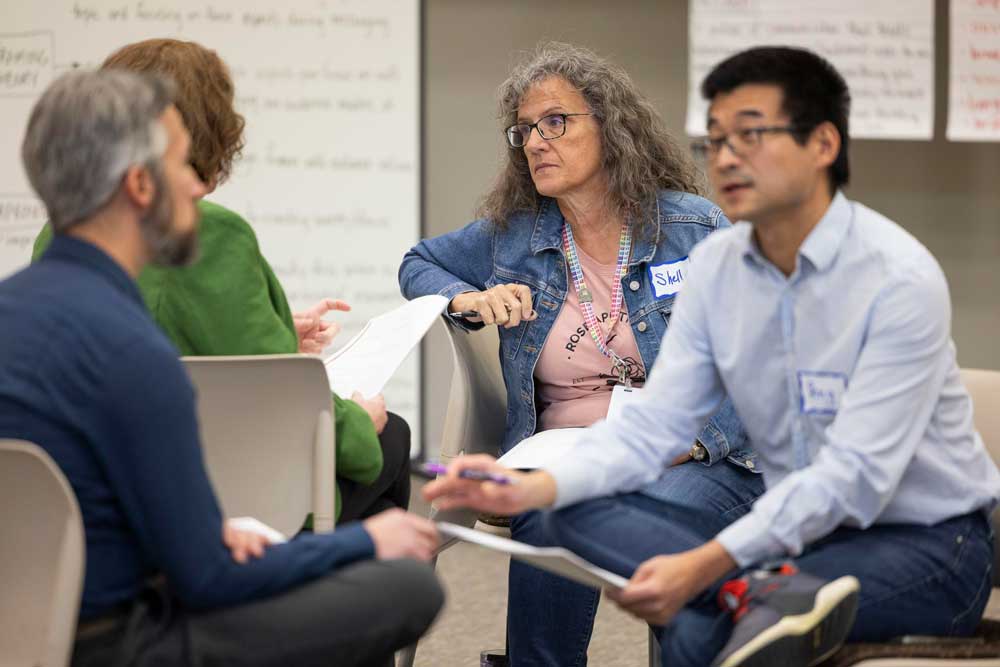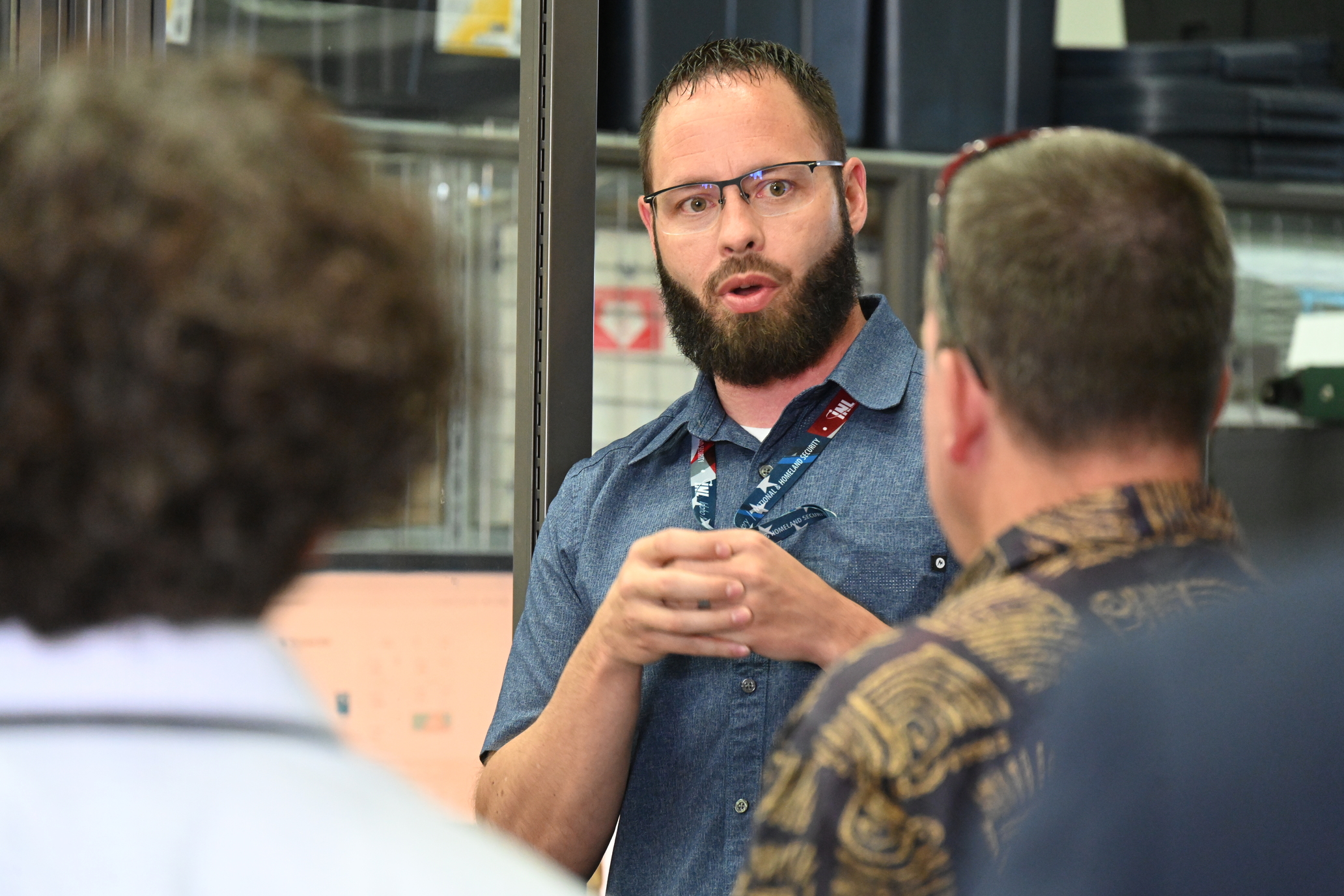Center for Securing Digital Energy Technology
Idaho National Laboratory, the Department of Energy’s Grid Deployment Office, and other national laboratories are collaborating to ensure the U.S. energy infrastructure is reliable, resilient, and secure. This involves strategically leveraging digital technologies to modernize the grid, enhance its resilience against all hazards and disruptions, and fortify national energy security across a diverse energy portfolio.
The widespread adoption of digital energy technologies—from smart meters and grid-edge devices to AI-powered control systems and cloud-based platforms—coupled with a global supply chain, could lead to security risks. Proactive security and engineering practices, combined with enhanced system integrity, are critical for maintaining a reliable energy supply. The goal is to enable a U.S. energy infrastructure that not only survives major events but thrives, ensuring a secure and dependable energy future.
GDO’s Reliability, Risk, and Assurance Programs (R2AP) will guide the Center for Securing Digital Energy Technology’s efforts to achieve these goals. The programs’ data-driven approach prioritizes investments in grid modernization, emphasizing projects with a multiplier effect to encourage widespread adoption of improved practices. This approach embraces stakeholder collaboration to implement advanced, scalable solutions—rejecting outdated approaches—to create a long-term, durable, and secure energy infrastructure.
Operational Focus Areas for Distributed Energy Resources, Renewable Security and Clean Energy
Training & Technical Assistance
Workshops
GDO Technical Assistance (TA) for Digital Assurance
Clean Energy Defenders Program
Vulnerability Assessment and Disclosure Digital Transition Road Map
Monitoring, Defense & Incident Response
Strategic Monitoring
Incident Response Assistance
Vulnerability Disclosure
Triage & sharing of alerts (with context for
clean energy owners and operators)
Coordination with vendors
Cloud Partnerships
Vulnerability & Equipment Assessment
Forensic Equipment Analysis
Analysis of major events involving
clean energy
Mission and Vision
The Center for Securing Digital Energy Transition provides building blocks and resources to enable the secure resilient digital transformation of energy. By elevating cybersecurity practices and improving overall system integrity, we strive for a system that can survive major events and thrive in enabling clean, affordable and secure supply of energy.
The Center collaborates with both traditional and non-traditional energy and security asset owners, vendors, developers, aggregators, original equipment manufacturers (OEMs), and operators.
The center will rapidly transition technology to industry and enable faster solution deployment and evaluation while driving foundational research goals in digital transformation of the electric grid and energy sector. This public-private alliance across a diverse range of energy stakeholders is committed to innovating and deploying new solutions to current and emerging challenges of energy transition.
Operational Focus Areas for Distributed Energy Resources, Renewable Security and Clean Energy
Training & Technical Assistance
Workshops
GDO Technical Assistance (TA) for Digital Assurance
Clean Energy Defenders Program
Vulnerability Assessment and Disclosure Digital Transition Road Map
Monitoring, Defense & Incident Response
Strategic Monitoring
Incident Response Assistance
Vulnerability Disclosure
Triage & sharing of alerts (with context for
clean energy owners and operators)
Coordination with vendors
Cloud Partnerships
Vulnerability & Equipment Assessment
Forensic Equipment Analysis
Analysis of major events involving
clean energy
Mission
The Center for Securing Digital Energy Tech (CSDET) supports secure digital transformation of energy by collaborating with diverse energy and security stakeholders. This public-private alliance innovates and deploys solutions for energy transition challenges.
CSDET drives impactful R&D and quickly transitions products to industry, enhancing collaborative research at Idaho National Laboratory and beyond. It provides agile, responsive solutions for energy stakeholders and government partners.
Vision
The CSDET will improve the national cybersecurity posture for third-party and clean energy suppliers and operators through engagement training and technology partnerships. The Center will be a cornerstone for public-private collaboration in securing the nation’s energy infrastructure, crafting a comprehensive national R&D and practice roadmap.
Bringing Relevant Outcomes and Resources Directly to Industry
The Center for Securing the Digital Energy Technology offers impactful research and development, and rapid deployment of products to industry with technical assistance and rapid response. Virtual and in-person training will enable participants to learn and qualify in realistic scenarios. Using a mix of private and public funds, the center is building a collaborative environment to encourage continuous improvement and dissemination of knowledge for a secure and resilient energy future.
Bringing relevant outcomes and resources directly to industry
The Center for Securing the Digital Energy Transition is a nucleus for cross-pollinated cyber and clean energy programs, with impactful research and development, and rapid transition of products to industry with technical assistance and rapid response.
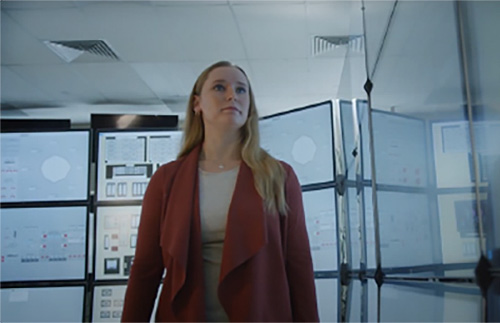
Design and Development Tools
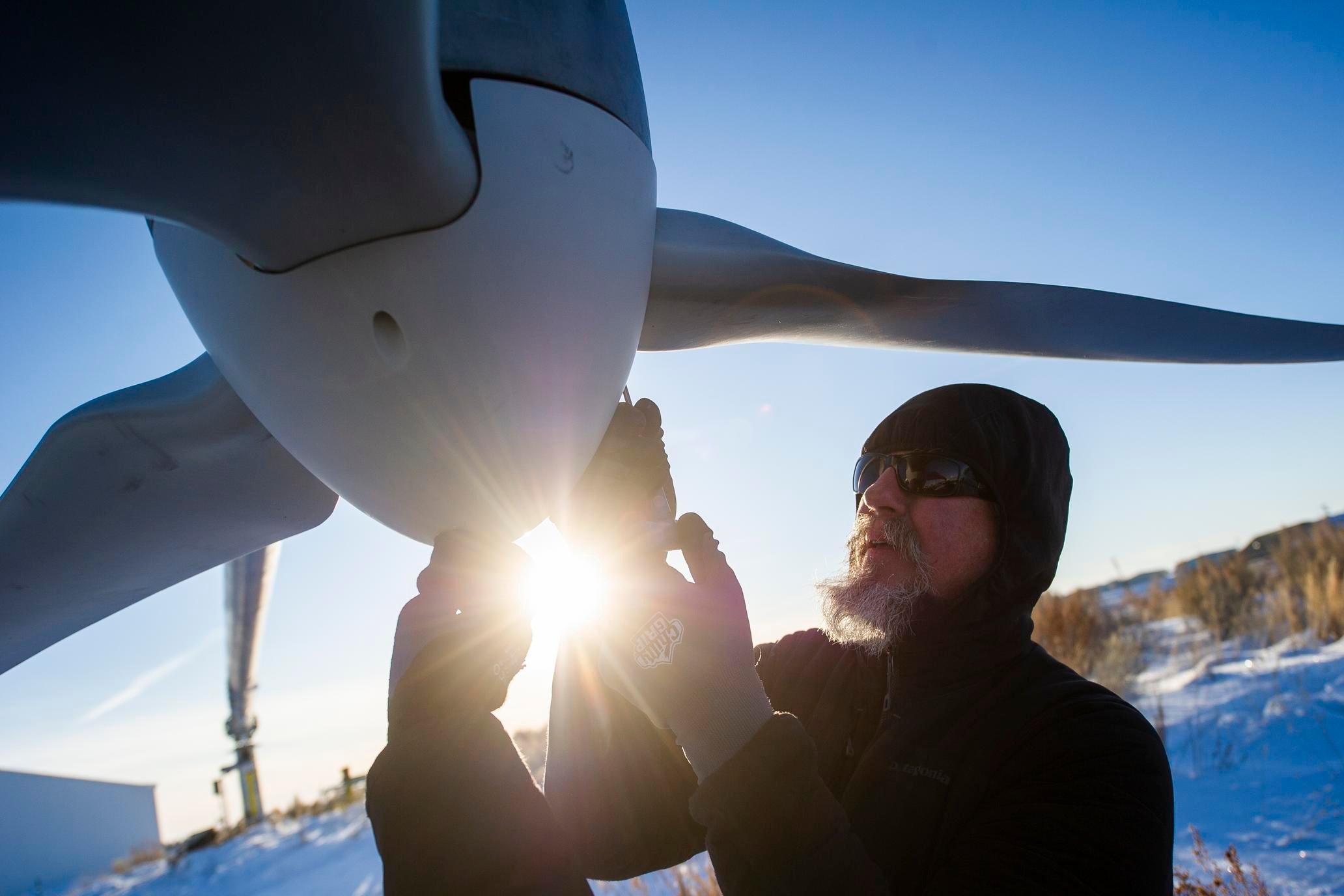
Integrated Testing and Exercises
Scalable Multi-sector Test Ranges Full-scale Cyber Exercises
5G and FutureG Security R&D

Design and Development Tools

Integrated Testing and Exercises
Scalable Multi-sector Test Ranges Full-scale Cyber Exercises
5G and FutureG Security R&D
Current Projects
BESSIE
Data Risk Analysis
Top Gear
Digital Transformation Roadmap
TA Digital Assurance
Cirrus – Responsible Cloud Framework
Top Gear
Substation AI
Rural Community Engagement in Resilience
S3 Consortium
What is digital energy transition?
Security and sustainability
Broad digital transformations in technology have impacted the way our energy is generated, distributed and used. It is not just about changing the sources of energy, but also revolutionizing the entire energy infrastructure to be more resilient, sustainable and agile to future evolutions.
A key aspect of this transformation in the energy sector is the integration of digital technologies like:
- Smart and connected devices
- Mass orchestration of distributed and centralized controllers
- Cloud-based systems in OT
- Advanced data analytics, including artificial intelligence.
As energy systems become more connected and reliant on these technologies, they become more vulnerable to cyber threats. Supply chains for electronic and digital systems are challenging and often non-domestic. These threats can range from data breaches and privacy violations to attacks on critical infrastructure that could potentially disrupt energy supply and distribution. This security paradigm must be built into the new system, with the potential to adapt to a changing geopolitical and climate landscape.
Digital technologies and data hold tremendous potential to accelerate clean energy transitions across the energy sector. Energy transitions will include:
- Deploying sophisticated software intelligence (AI) to optimize smarter distribution networks and data center use.
- Cyber securing the rapid adoption of smart meters and electric vehicles.
- Protecting internet protocols for new operational technologies and their respective software.
In electricity systems, digital technologies can help integrate increasing shares of variable renewables and improve the reliability of grids, while in end-use sectors they can improve clean energy and material efficiency.
Design & Development Tools
Workshops & Training
Testbeds & Exercises
Technical Assistance & Engagement
Events and Conferences
Event Name: Lorem ipsum dolor sit amet, consectetur adipiscing elit. Ut elit tellus, luctus nec ullamcorper mattis, pulvinar dapibus leo.
Events and conferences
GRIDSECCON
S4x25
DISTRIBUTECH
Publications
- Enhancing Cloud Cybersecurity: Prescriptive Controls for Operational Technology (October 2024)
- Cyber Resilience and Social Equity: Twin Pillars of a Sustainable Energy Future (September 2024)
- Evaluation and Use Cases in Cloud Implementation for Future Electric Grid Technologies (July 2024)
- Cyber-Informed Engineering: Cybersecurity for Microgrids Workshop Workbook (February 2024)
- Use Case-Informed Framework for Utility Cloud Migration (January 2024)
- Cyber-Informed Engineering Implementation Guide (August 2023)
- National Cyber-Informed Engineering Strategy (June 2022)
- Cybersecurity Considerations for Grid-Connected Batteries with Hardware Demonstrations (May 2021)
Publications
- Enhancing Cloud Cybersecurity: Prescriptive Controls for Operational Technology (October 2024)
- Cyber Resilience and Social Equity: Twin Pillars of a Sustainable Energy Future (September 2024)
- Evaluation and Use Cases in Cloud Implementation for Future Electric Grid Technologies (July 2024)
- Cyber-Informed Engineering: Cybersecurity for Microgrids Workshop Workbook (February 2024)
- Use Case-Informed Framework for Utility Cloud Migration (January 2024)
- Attack Surface of Wind Energy Technologies in the United States (January 2024)
- Cyber-Informed Engineering Implementation Guide (August 2023)
- Cybersecurity Resilience Demonstration for Wind Energy Sites in Co-Simulation Environment (February 2023)
- National Cyber-Informed Engineering Strategy (June 2022)
- A Cyber-Resilience Risk Management Architecture for Distributed Wind (October 2021)
- Cybersecurity Guide for Distributed Wind (August 2021)
- Cybersecurity Considerations for Grid-Connected Batteries with Hardware Demonstrations (May 2021)
Mission
The Center for Securing Digital Energy Tech provides building blocks and resources to enable the secure, resilient digital transformation of energy. The Center collaborates with both traditional and nontraditional energy and security asset owners, vendors, developers, aggregators, original equipment manufacturers, and operators. This public-private alliance across a diverse range of energy stakeholders is committed to innovating and deploying new solutions to current and emerging challenges of energy transition.
- The CSDET is a nucleus for cross-pollinated cyber and cutting-edge energy programs, with impactful research and development, and rapid deployment of products to industry with technical assistance and rapid response.
- The CSDET will rapidly move advanced next generation technology into industry and enable faster solution deployment and evaluation while driving foundational research goals in digital transformation of the electric grid and energy sector.
- The CSDET will enhance both collaborative research and development at Idaho National Laboratory and other laboratories, while providing agility and responsive solutions to energy stakeholders and government partners.
Vision
The CSDET will improve the national cybersecurity posture for third-party and energy suppliers and operators through engagement training and technology partnerships. The Center will be a cornerstone for public-private collaboration in securing the nation’s energy infrastructure, crafting a comprehensive national R&D and practice roadmap.
Leadership Team

Emma Stewart
Director
Tracy Briggs
Program Manager
Megan Culler
Technical Director for Energy Cybersecurity
Virginia Wright
Strategic Advisor & Operations

